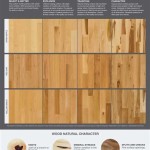Vinyl Snap Together Flooring: A Comprehensive Guide
Vinyl snap-together flooring, also known as click-lock vinyl flooring, has emerged as a popular and practical choice for both residential and commercial spaces. Its ease of installation, durability, and aesthetic versatility make it a compelling alternative to traditional flooring options such as hardwood, tile, or laminate. This article provides a comprehensive overview of vinyl snap-together flooring, covering its construction, advantages, disadvantages, installation process, maintenance requirements, and factors to consider when selecting the right product.
Vinyl snap-together flooring refers to a type of flooring system where individual planks or tiles interlock with each other using a specialized tongue-and-groove mechanism. This "snap-together" design eliminates the need for adhesives or nails, making installation significantly easier and faster. The core material of these flooring products is typically composed of multiple layers, each contributing to the overall performance and longevity of the floor. Understanding the composition of vinyl snap-together flooring is crucial for evaluating its suitability for different applications.
A typical vinyl snap-together plank consists of several key layers: a wear layer, a print layer, a core layer, and often an underlayment. The wear layer, the topmost surface, is a transparent coating designed to protect the floor from scratches, stains, and wear. Its thickness, measured in mils (thousandths of an inch), directly correlates with the floor's durability. A thicker wear layer will withstand heavier foot traffic and resist damage more effectively. The print layer is a high-resolution image that replicates the appearance of natural materials like wood, stone, or tile. Advanced printing technologies allow for remarkably realistic textures and patterns. The core layer provides structural stability and resistance to moisture. Common core materials include rigid core (such as WPC or SPC) and flexible vinyl core. Finally, some vinyl snap-together flooring products come with an attached underlayment. This layer can enhance sound absorption, cushion underfoot, and provide an additional barrier against moisture.
Key Advantages of Vinyl Snap-Together Flooring
Vinyl snap-together flooring offers a multitude of benefits that contribute to its increasing popularity. These advantages span ease of installation, durability, aesthetics, and maintenance, making it an attractive option for a wide range of projects.
One of the most significant advantages is its ease of installation. The click-lock mechanism allows for rapid and straightforward installation, even for individuals with limited DIY experience. Because no adhesives are required, the installation process is cleaner and less messy than traditional flooring methods. Moreover, vinyl snap-together flooring can often be installed over existing hard surfaces, such as concrete, tile, or wood, provided the subfloor is level and in good condition. This eliminates the need for costly and time-consuming subfloor preparation. The floating installation also allows for expansion and contraction with temperature and humidity changes, reducing the risk of buckling or warping.
Durability is another key factor that makes vinyl snap-together flooring a desirable choice. The wear layer protects the surface from scratches, stains, and fading, making it suitable for high-traffic areas and households with pets or children. The core layer provides resistance to moisture, making it appropriate for use in bathrooms, kitchens, and basements. Rigid core vinyl flooring, in particular, offers exceptional dimensional stability and impact resistance. Unlike hardwood, vinyl is less susceptible to damage from spills and humidity. The lifespan of vinyl snap-together flooring can range from 10 to 25 years or more, depending on the quality of the product and the level of maintenance.
The aesthetic versatility of vinyl snap-together flooring is another compelling attribute. Advances in printing technology have enabled manufacturers to create incredibly realistic replications of natural materials. Vinyl flooring can mimic the look of hardwood, stone, tile, and even more unique patterns and designs. The realistic textures and embossing further enhance the visual appeal. Furthermore, vinyl snap-together flooring is available in a wide range of colors, sizes, and styles to suit various design preferences. Whether the desired aesthetic is modern, rustic, or traditional, there is likely a vinyl snap-together flooring option to meet the needs.
Potential Disadvantages of Vinyl Snap-Together Flooring
While vinyl snap-together flooring offers numerous advantages, it is essential to consider potential drawbacks before making a purchase decision. These disadvantages relate to factors such as resale value, potential indentations, and environmental considerations.
Compared to natural materials like hardwood or stone, vinyl snap-together flooring may not add as much to the resale value of a property. While it can enhance the appearance and functionality of a home, some buyers may still prefer the perceived luxury and longevity of natural materials. This is especially relevant in higher-end properties where buyers may be more willing to invest in premium flooring options. However, in starter homes or rental properties, the affordability and durability of vinyl snap-together flooring can be a significant advantage.
While the wear layer protects against scratches, vinyl snap-together flooring is still susceptible to indentations from heavy furniture or sharp objects. Over time, heavy furniture can leave permanent marks on the surface. Using furniture pads and avoiding the dragging of heavy objects across the floor can help mitigate this issue. In areas with exceptionally heavy traffic or the use of heavy equipment, more durable flooring options may be more suitable.
Environmental considerations are also relevant when evaluating vinyl snap-together flooring. Traditional vinyl flooring is made from PVC (polyvinyl chloride), which is a petroleum-based plastic. While some manufacturers are now offering more environmentally friendly options, such as flooring made from recycled materials or with low-VOC (volatile organic compound) emissions, it is important to research the environmental impact of the specific product being considered. Choosing flooring options with certifications such as FloorScore or GreenGuard can help ensure that the product meets certain environmental standards.
Installation and Maintenance of Vinyl Snap-Together Flooring
The installation of vinyl snap-together flooring is generally straightforward, but proper preparation and technique are essential for achieving a successful and long-lasting result. Equally important is ongoing maintenance to preserve the appearance and extend the lifespan of the floor.
Before beginning the installation, it is crucial to prepare the subfloor properly. The subfloor must be clean, level, and dry. Any imperfections, such as cracks or unevenness, should be addressed before laying the flooring. If installing over an existing hard surface, ensure that it is free of loose debris and that any loose tiles or planks are properly secured. It is also recommended to allow the vinyl flooring to acclimate to the room's temperature for at least 48 hours prior to installation. This will help minimize expansion and contraction after installation. Cutting the planks accurately is essential for a professional-looking finish. A utility knife or a flooring cutter can be used to make precise cuts. Following the manufacturer's instructions carefully is crucial for ensuring a proper installation.
Maintaining vinyl snap-together flooring is relatively simple. Regular sweeping or vacuuming is recommended to remove dirt and debris that can scratch the surface. Damp mopping with a mild detergent is usually sufficient for cleaning. Avoid using abrasive cleaners or harsh chemicals, as these can damage the wear layer. Spills should be cleaned up promptly to prevent staining. Using furniture pads under heavy furniture can help prevent indentations. While vinyl snap-together flooring is water-resistant, it is not completely waterproof. It's important to address any leaks or spills promptly to prevent water from seeping underneath the flooring and causing damage to the subfloor.
In conclusion, vinyl snap-together flooring presents a compelling option for various flooring applications due to its ease of installation, durability, aesthetic versatility, and relatively simple maintenance requirements. While potential drawbacks such as resale value considerations and susceptibility to indentations should be taken into account, the overall benefits often outweigh the disadvantages, particularly for budget-conscious projects or spaces where moisture resistance is paramount. By carefully considering the key factors outlined in this article, prospective buyers can make an informed decision and select the vinyl snap-together flooring that best suits their individual needs and preferences.

How To Install A Lock Vinyl Floor

Vinyl Vs Laminate Flooring Pros Cons And Differences 2024 Forbes Home

A Beginner S Guide To Installing Vinyl Plank Flooring Dumpsters Com

Interlocking Vinyl Tiles For Trade Shows American Displays

What S The Difference Between Vinyl And Laminate Flooring Igloo Surfaces

Laminate Vs Vinyl Flooring Comparison Guide

How To Install Floating Vinyl Flooring Over Old Floors Simply2moms

Everything You Need To Know About Vinyl Flooring Blog

Luxury Vinyl Flooring Vs Glue Direct Wood

Luxury Vinyl Locking Systems 101 Nufloors
Related Posts








